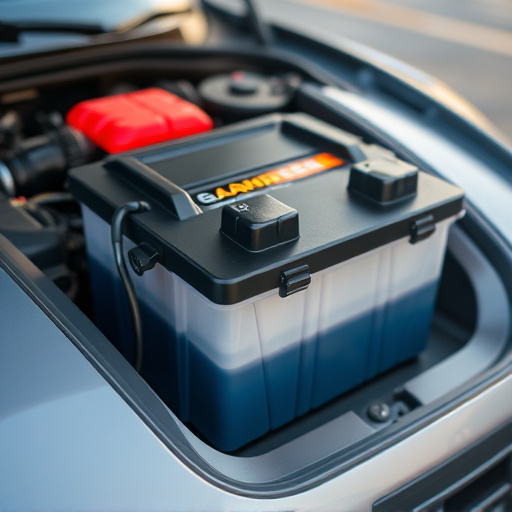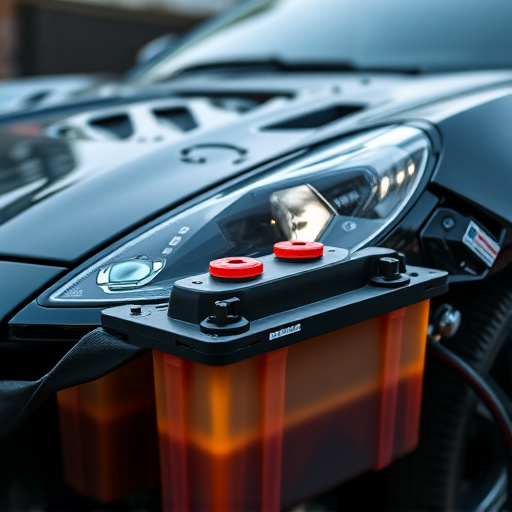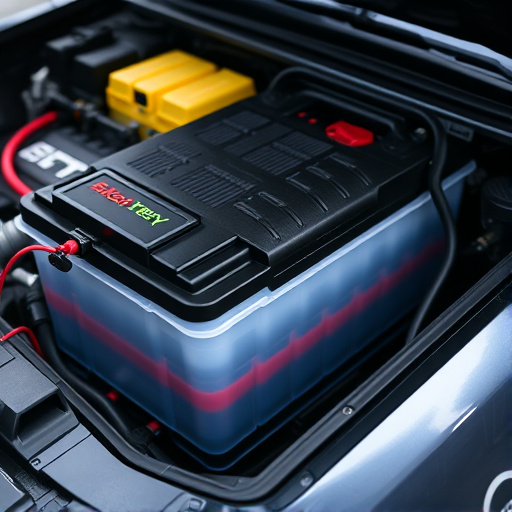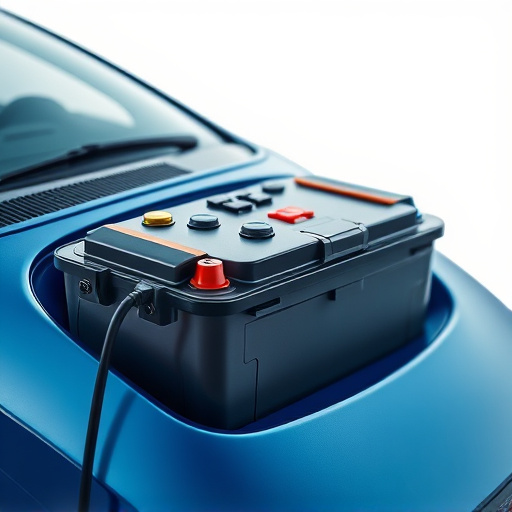Before replacing a car battery, check vehicle specifications for voltage, amperage, and battery type (e.g., lead-acid, lithium). Use these details to select a compatible battery from a manufacturer's website or manual. Replace the old battery by disconnecting cables safely, cleaning terminals, installing new, then reconnecting cables in order. Maintain optimal battery performance through regular cleaning, inspection, voltage monitoring, and alternator care.
Are you tired of a sluggish start or a car that won’t turn over? It might be time to replace your car’s battery. But with numerous options and models, ensuring compatibility can be daunting. This guide is your navigation system through the process, from understanding your car’s power needs to safely disposing of the old. We’ll walk you through assessing compatibility, identifying older batteries, replacing it, and maintaining peak performance. Get ready to hit the road with a fresh, compatible battery!
- Understanding Your Car's Battery Requirements
- Assessing Compatibility: Factors to Consider
- Identifying Older Model Batteries
- The Process of Replacing Your Car Battery
- Ensuring Safe Handling and Disposal
- Maintaining Optimal Battery Performance Post-Replacement
Understanding Your Car's Battery Requirements

Before diving into replacing your car battery, understanding your vehicle’s specific requirements is paramount. Each car model has unique specifications for its battery, including voltage, amperage, and physical dimensions. Check your owner’s manual or consult a reputable automotive source to determine these details. The right fit ensures your new battery aligns with the manufacturer’s recommendations, guaranteeing optimal performance and longevity.
When replacing your car battery, it’s crucial to consider not just the physical attributes but also the type of battery—lead-acid, lithium, or other advanced variants. Each has distinct characteristics affecting power delivery, charging dynamics, and weight. Ensuring compatibility between these factors is key to a seamless upgrade, enhancing overall vehicle efficiency and safety.
Assessing Compatibility: Factors to Consider

When considering a replacement for your car battery, assessing compatibility is crucial before making a purchase. Several factors come into play to ensure the new battery fits your older model seamlessly. Firstly, consult your vehicle’s manual or manufacturer’s website; they often provide detailed specifications and recommendations for compatible batteries. The year, make, and model of your car are primary identifiers as automotive batteries vary across different years and brands.
Additionally, check the voltage, cold cranking amps (CCA), and physical dimensions of the existing battery to match them with the replacement. Voltage ensures compatibility with your vehicle’s electrical system, while CCA ratings determine the battery’s power output during cold temperatures, essential for starting an engine in chilly conditions. Physical dimensions guarantee a secure fit within the battery compartment.
Identifying Older Model Batteries

Identifying older model batteries is a crucial step in ensuring seamless replacement for your car. One common indicator is the battery’s size and shape, as newer cars often come with more compact designs while older models typically have standard or larger batteries. When removing the old battery, take note of its physical dimensions to help you select a compatible replacement.
Additionally, checking the battery’s voltage and ampere-hour (Ah) rating is essential. Older vehicles may require specific voltage levels, and the Ah rating determines the battery’s capacity. This information can usually be found on a sticker inside the engine compartment or in your vehicle’s manual. By cross-referencing these details with available modern batteries, you’ll find suitable replacements for your car, ensuring a smooth and efficient replace car battery process.
The Process of Replacing Your Car Battery

Replacing your car battery is a straightforward process that can be accomplished with the right tools and a few simple steps. First, locate the battery in your vehicle, usually found under the hood. Most cars have them positioned in an accessible spot to make maintenance easier. Once located, disconnect the negative cable first, followed by the positive one. This prevents any short circuits or accidental sparks while you work. After removing the old battery, clean the tray and battery terminals with a wire brush or baking soda solution to ensure optimal contact.
Next, install the new battery, ensuring it’s properly seated in the tray. Connect the positive cable first, followed by the negative one, tightening the connections securely. Check that all components are in place and functioning correctly before starting your vehicle to test the new battery. This process ensures a smooth transition, keeping your car running smoothly without unexpected breakdowns caused by a faulty battery.
Ensuring Safe Handling and Disposal

When replacing your car battery, safety should always be a top priority. Always disconnect the negative battery cable first to avoid short circuits and electrical hazards. Wear protective gear, such as gloves and safety glasses, especially when handling corroded or leaking batteries. Properly dispose of the old battery at an approved recycling center to prevent environmental harm.
Never throw it away with regular trash, as lead-acid batteries contain hazardous materials that can contaminate soil and water. Many auto parts stores offer battery disposal services for a small fee. By following these simple steps, you’ll ensure a smooth replacement process and contribute to a greener environment.
Maintaining Optimal Battery Performance Post-Replacement

After successfully replacing your car’s battery, it’s crucial to maintain optimal performance from your new battery to ensure top vehicle efficiency and avoid unwanted breakdowns. One effective strategy is to regularly clean and inspect the battery terminals and cables for any corrosion or loose connections. Even a slightly corroded terminal can hinder power flow, reducing battery life. Use a mixture of baking soda and water to gently scrub away corrosion, then rinse and dry thoroughly.
Additionally, make sure all electrical components are functioning correctly and not drawing excessive power from the battery. Regularly inspect your alternator for any signs of wear or damage, as it’s responsible for recharging the battery while you drive. Keep an eye on your voltage levels, especially when starting the engine, to ensure they remain within the recommended range. By taking these simple precautions, you can help prolong the life of your new car battery and maintain optimal performance on the road.
When considering a replacement car battery, understanding your vehicle’s specific requirements and assessing compatibility factors are essential steps. By identifying older model batteries and following the correct replacement process, you can ensure a smooth transition. Remember to handle and dispose of the old battery safely and maintain optimal performance post-replacement for enhanced driving experiences. Efficiently navigating these steps will help you seamlessly replace your car battery, keeping your vehicle running smoothly for years to come.
